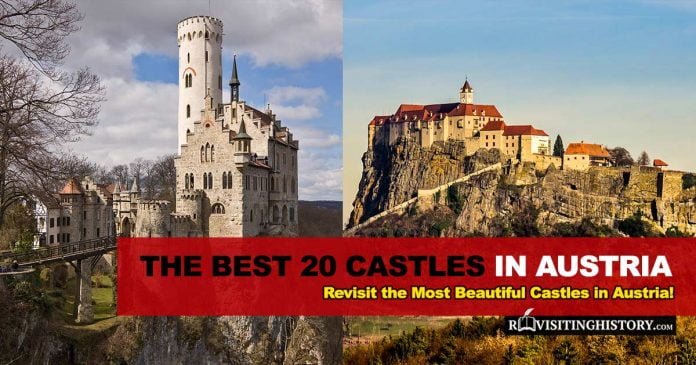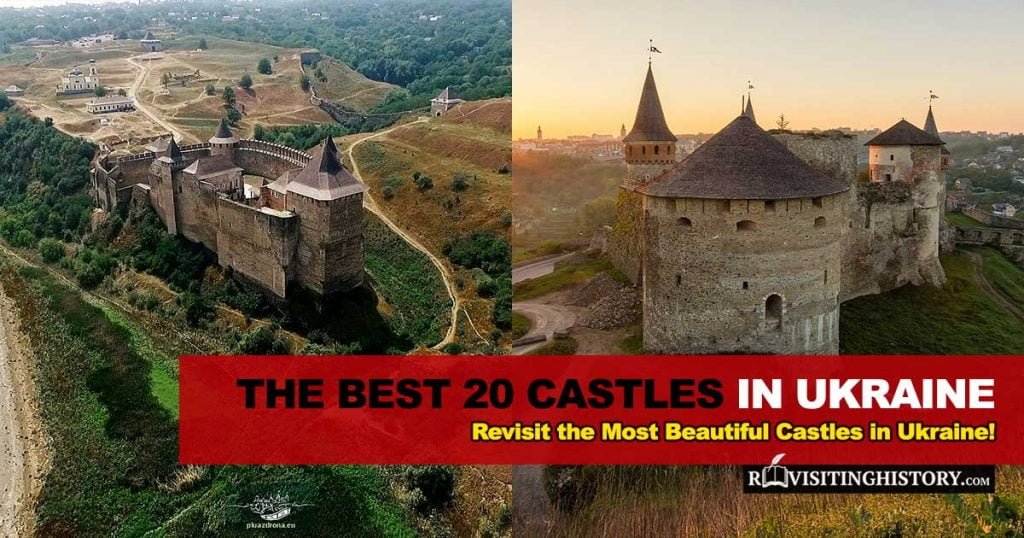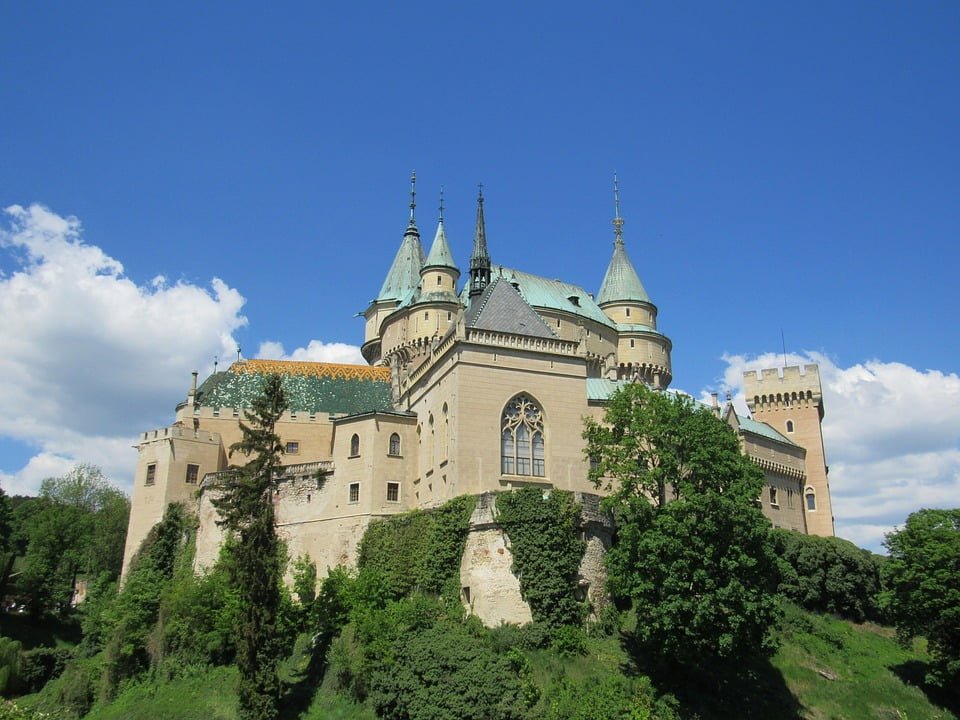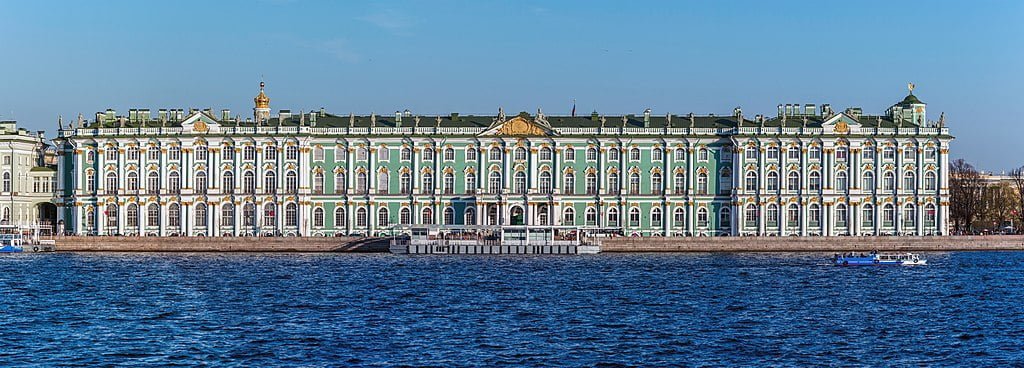The beautiful fertile banks of the River Danube are the birthplace of one of the longest-reigning empires, the mighty Austro-Hungarian Empire. Therefore, they are also the home to many amazing royal palaces and fortresses.
You will see what remains of the great House of Habsburg and their constant resistance against the Ottomans. Apart from history, these castles are rumored to house the supernatural: witchcraft and associated executions.
If you take a trip to Austria, your visit will be incomplete without visiting these magnificent palaces. Some of these lay in ruins, but there are many more that are well preserved. Let’s walk you through some of the best palaces that will captivate your heart.
Table of Contents
10 Most Popular Castles to Visit in Austria
The order of the list is based on Google search volume of each castle = popularity.
1. Itter Castle
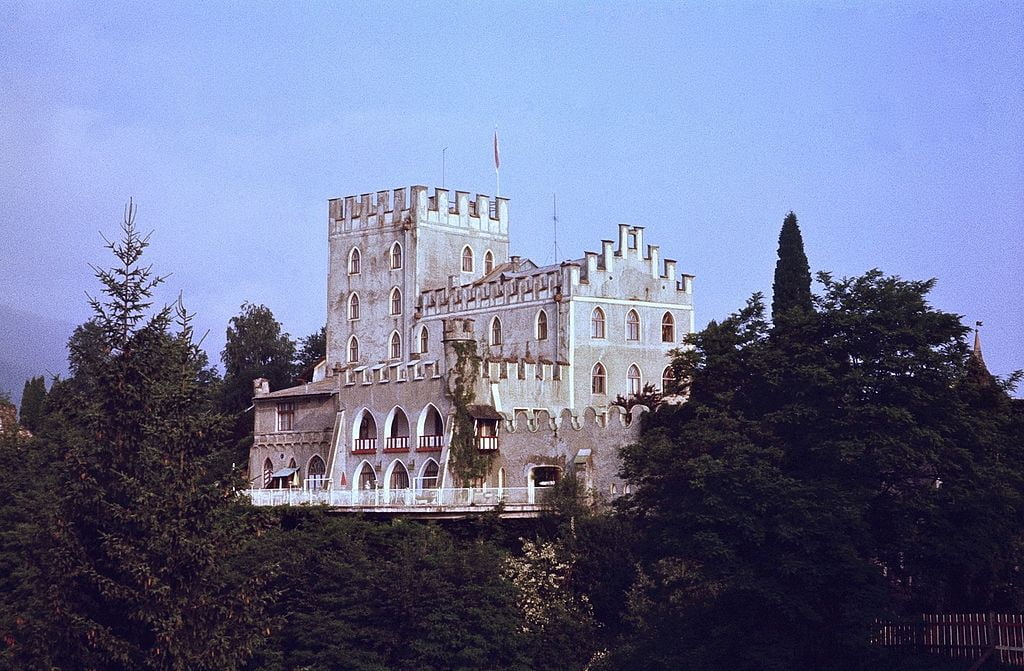
This privately-owned castle is built on the site of a Medieval castle overlooking the Brixental Valley.
During World War II, it was used as a prison by the Nazis, specifically for French VIP prisoners of war. Two notable dignitaries were former prime ministers of France Paul Reynaud and Edouard Daladier. Marie-Agnes de Gaulle, sister to General Charles de Gaulle and a prominent member of the resistance movement, was also held there until they were all set free unharmed.
On 5 September 1945, the US Army, Austrian Resistance, German Wehrmacht, and the prisoners fought side by side against the 100 – 150 Nazi SS soldiers. This battle,one of the strangest occurrences during the war, was aptly named, “The Battle for Itter Castle”. Over 100 SS soldiers were captured and the prisoners set free during this 24-hour onslaught.
- Location: Itter, Austria
- Time built: 19th Century
- Architectural style: Tudor Revival
- Touring: Not allowed.
2. Hohenwerfen Castle
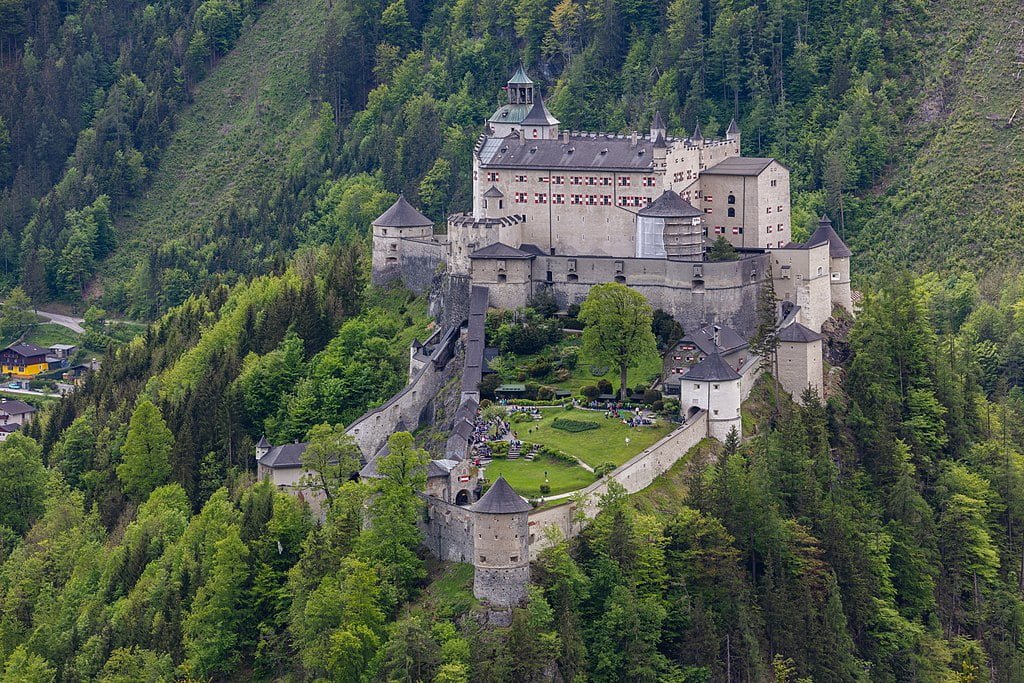
This beautiful castle is located between the Berchtesgaden Alps and the Tennen Mountains, with a magnificent view of the Salzach valley and the market town of Werfen.
The Archbishop of Salzburg commissioned the building of the enormous stone fortress over an old Roman castle. He built a palace, chapel, and curtain walls, later additions included the bastion and towers. Hohenwerfen is a “sister” castle to Hohensalzburg Fortress, both built to form a line of defense against invaders.
Exploring the 900-year-old castle and buildings will lead you through hidden stairways and tunnels or up to experience a bird’s eye view from the Wallerturm watchtower. Immerse yourself in the permanent and temporary exhibitions that provide you with historical information about the castle and battles. Before leaving this breathtaking castle, don’t forget to visit the fascinating falconry show.
- Location: Werfen, Austria
- Time built: 11th Century
- Architectural style: Renovated in the Romantic style
- Touring: Allowed. Visit the official website for more information.
3. Liechtenstein Castle
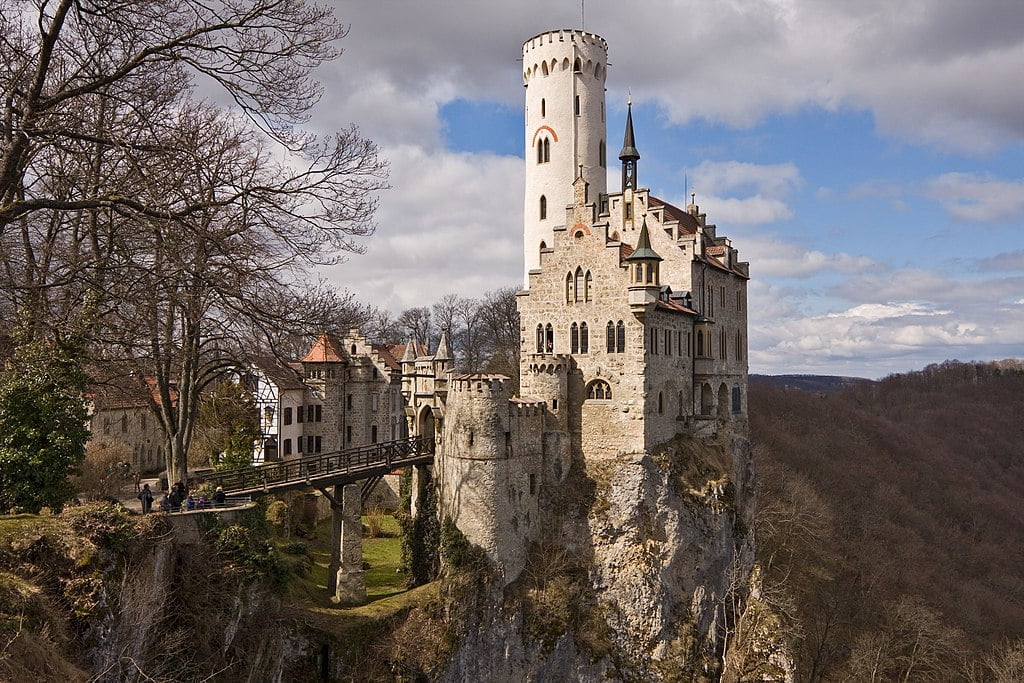
Lichtenstein Castle was home to the Liechtenstein family for 200 years as well as the seat of the Prince of Liechtenstein. Located in the majestic Vienna woods, Liechtenstein Castle has had an unfortunate history. Periods of turbulent events caused the destruction and rebuilding of the birthplace of the House of Liechtenstein multiple times. Its destruction came twice at the hands of the Ottomans, once in the Siege of Vienna, and then again in the Battle of Vienna.
Nonetheless it has survived as more than ruins lost to time! Currently, it is a privately owned property that hosts festivals and film screenings. The annual summer Nestroy Theatre Festival is held here. It has served as the set of many famous films such as A Walk with Love and Death, The Vampire Happening, The Fifth Musketeer, and The Three Musketeers.
- Location: Maria Enzersdorf, Lower Austria
- Time built: 12th/19th century
- Architectural style: Neo-gothic
- Touring: Allowed. Visit the official website for more information.
4. Belvedere Castle
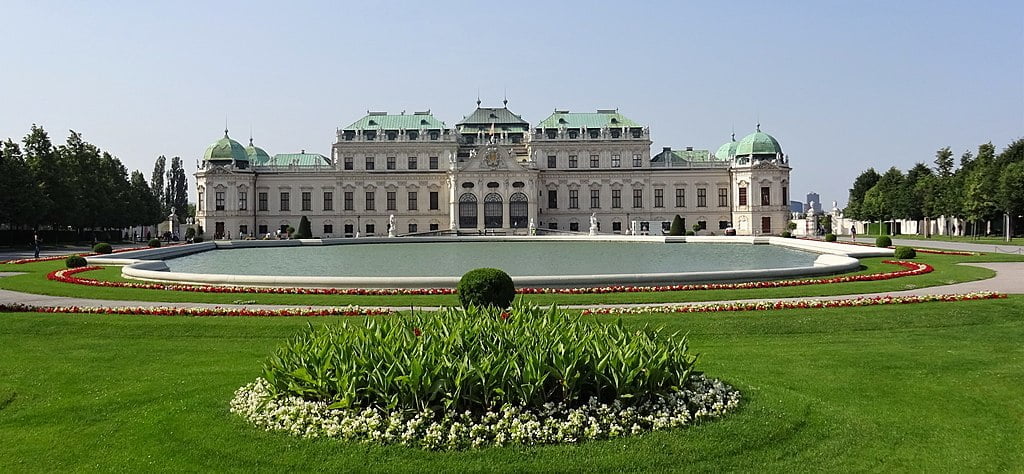
This magnificent palace–located in Landstrasse in Vienna–was built for Prince Eugene of Savoy as his summer residence. Prince Eugene was a great military leader and an art connoisseur that wanted the palace complex to reflect his personal style and taste.
He commissioned Architect Johan Lucas von Hildebrant to make his visions a reality. Hildebrandt built a combined upper and lower palace, blending elements of art and architecture into this unique Baroque construct. Landscaped gardens to link the two palaces into one palatial complex in the “Versailles Style”.
The staircase with hand-carved cartouches and emblems is only one of the beautiful architectural marvels of this palace, another: the marble State Hall decorated with intricate artistic frescoes. The palace hosts Austria’s most valuable art museum, including the largest collection of Klimt paintings such as “The Kiss” and “Judith”.
- Location: Vienna, Austria
- Time built: 18th Century
- Architectural style: Baroque
- Touring: Allowed. Visit the official website for more information.
5. Esterháza Palace
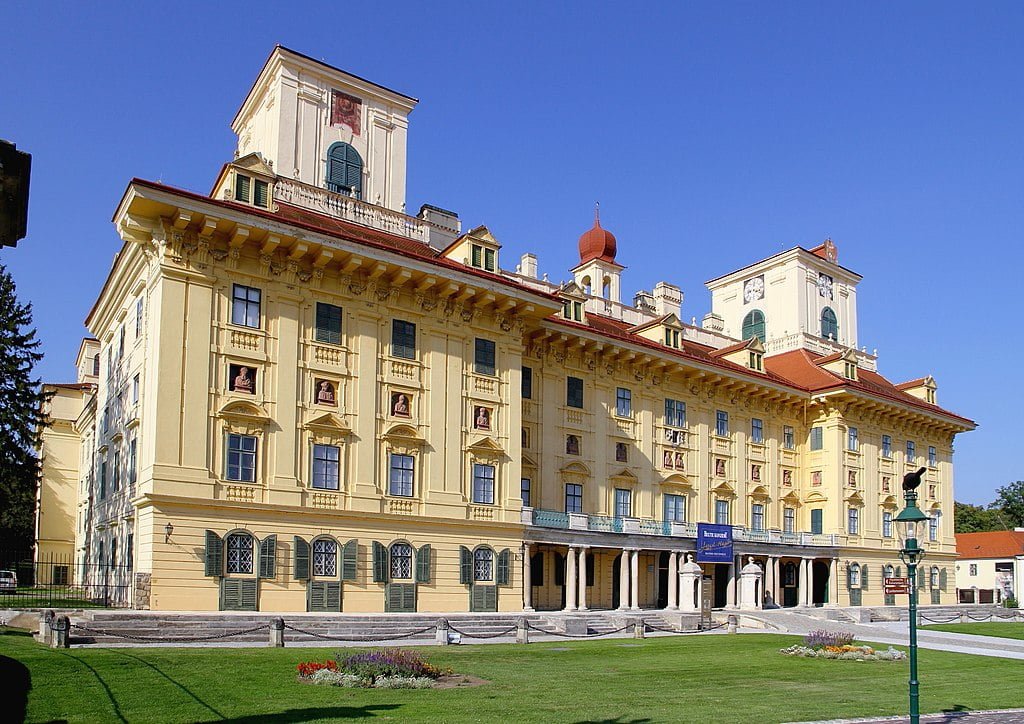
The Imperial Castle of the Habsburg Dynasty for over 300 years was converted into a palace in the 17th century by Prince Paul of Esterházy. He turned the original Gothic castle into the breathtaking Baroque palace we see today.
The Haydnsaal, inspired by the composer Joseph Haydn, has perfect acoustics and atmosphere. It is here that the famous Emperor Quartet first played in 1797. Joseph Haydn composed many of his classical pieces in this room, formerly the banqueting hall. The magnificent architecture and outstanding acoustics are world-famous, over 100 concerts are held here annually.
Historical treasures such as the largest complete set of Neoclassical silverware can be seen at the Wine Museum. Explore the magnificent apartments of the princess, the Mirror Hall, and enjoy incredible views from the balconies before returning to real life!
- Location: Eisenstadt, Austria
- Time built: 13th Century
- Architectural style: Baroque
- Touring: Allowed. Visit the official website for more information.
Revisit More Historic Places Below or Read Further
6. Hochosterwitz Castle
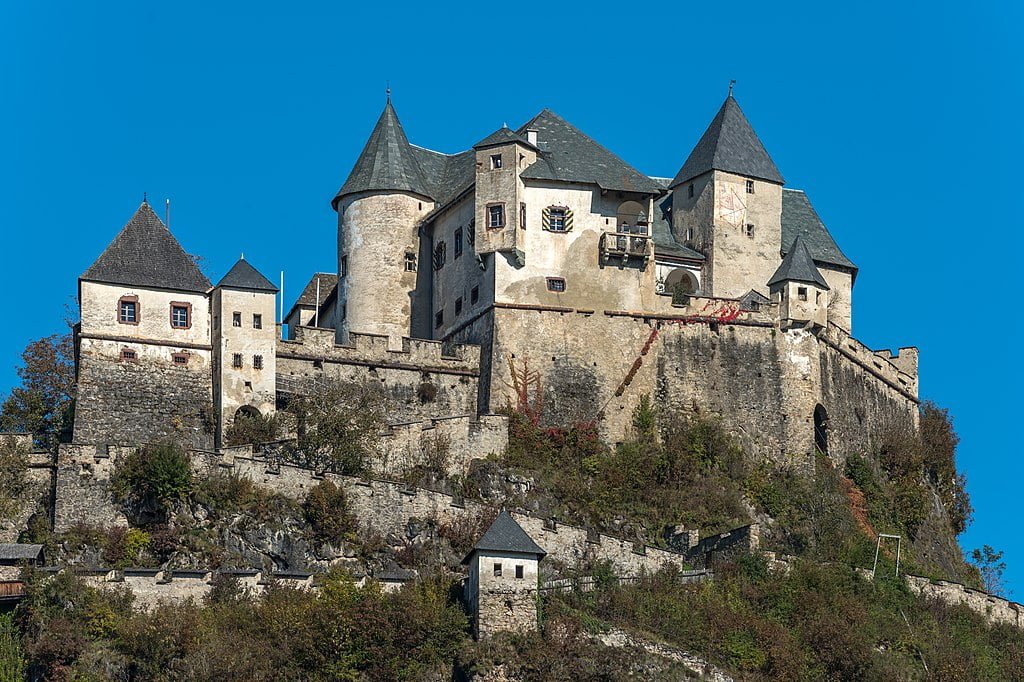
This impenetrable rock fortress, accessible only via a route that passes through fourteen fortified gates, made this fortress the place of refuge against the Turkish invasions of the 11th and 12th centuries.
Hochosterwitz Castle is considered to be the most impressive example of a Medieval fortress in Austria, with parts of the castle carved into the dolomite rock, a marvel of engineering at the time it was built.
The stronghold has a bird’s eye 360-view, making it necessary for the enemy to conquer gate by gate while being attacked from all sides only to ultimately arrive in the armory yard. This Austrian landmark can be accessed today by a steep 565 ft climb to the tower The stairs leading up to the fortress are aptly called the “fool’s stairs”.
- Location: Hochosterwitz, Austria
- Time built: 10th Century
- Architectural style: Medieval
- Touring: Allowed. Visit the official website for more information.
7. Schloss Schonbrunn

The pleasure palace of the royals and summer residence of the Habsburgs, Schloss Schonbrunn equals Versailles in reputation and splendor. Designed in true Rococo style, this 1441-room palace is a vision that has to be experienced.
Built as a wedding gift to Empress Maria Theresia on the site of an old hunting lodge, the name Schonbrunn means “beautiful well”–named for the artesian well that supplies clear spring water to the palace.
Marvel at the architectural style of the buildings while you walk through the ballrooms and private Imperial apartments. Then, appreciate the intricate design and landscaping of the gardens that include an Orangery Garden and a Botanical Garden. Before you leave, remember to forget: get lost in the fantastic maze designed to amuse and please!
- Location: Hietzing, Austria
- Time built: 18th Century
- Architectural style: Rococo
- Touring: Allowed. Visit the official website for more information
8. Riegersburg Castle
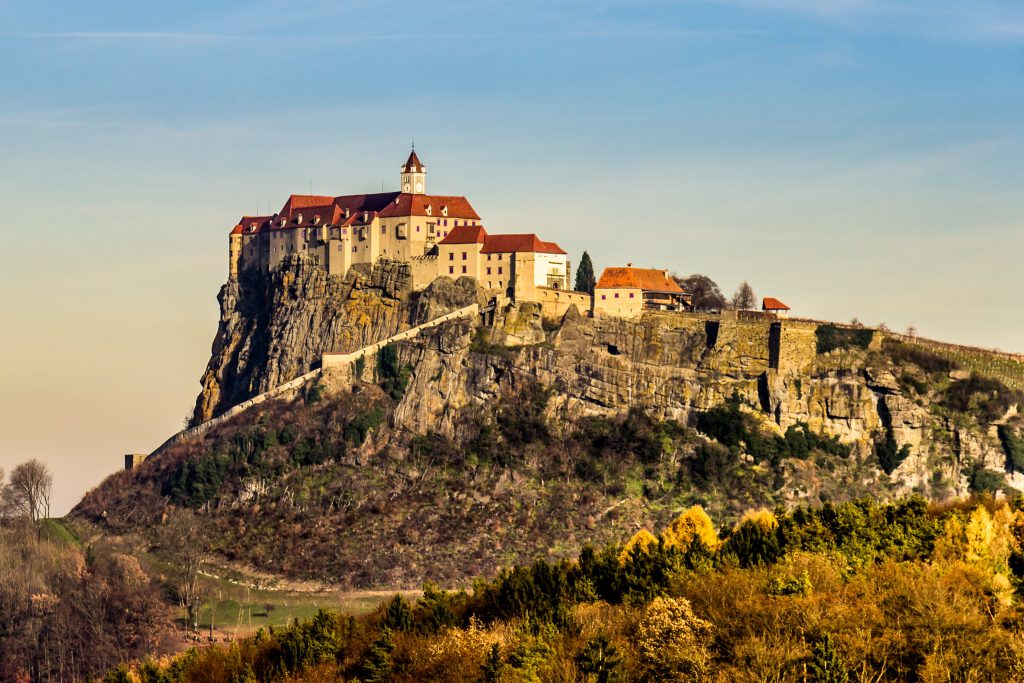
This castle on top of an inactive volcano is another one of the properties of the Princely Family of Liechtenstein. Riegersburg Castle was dubbed ‘the strongest fortress of the Christian world’ after its construction on the orders of Baroness Katharina Elisabeth von Wechsler. The Baroness was an extremely powerful woman in the male-dominated society of the time, she ruled with fear and left behind a long legacy deeply intertwined in the 850-year-old history of Riegersburg Castle.
The present-day Riegersburg Castle is a prestigious Austrian museum. Out of the 108 rooms, 25 are open for public visits. Nine of these rooms showcase the witches and sorcerers of Austria, while the other sixteen narrate the history of the castle itself. Discover the events that happened in the castle and marvel at its mighty strength.
- Location: Riegersburg, Styria
- Time built: 17th century
- Architectural style: Combination of Late Renaissance, Medieval
- Touring: Allowed. Visit the official website for more information.
9. The Hofburg
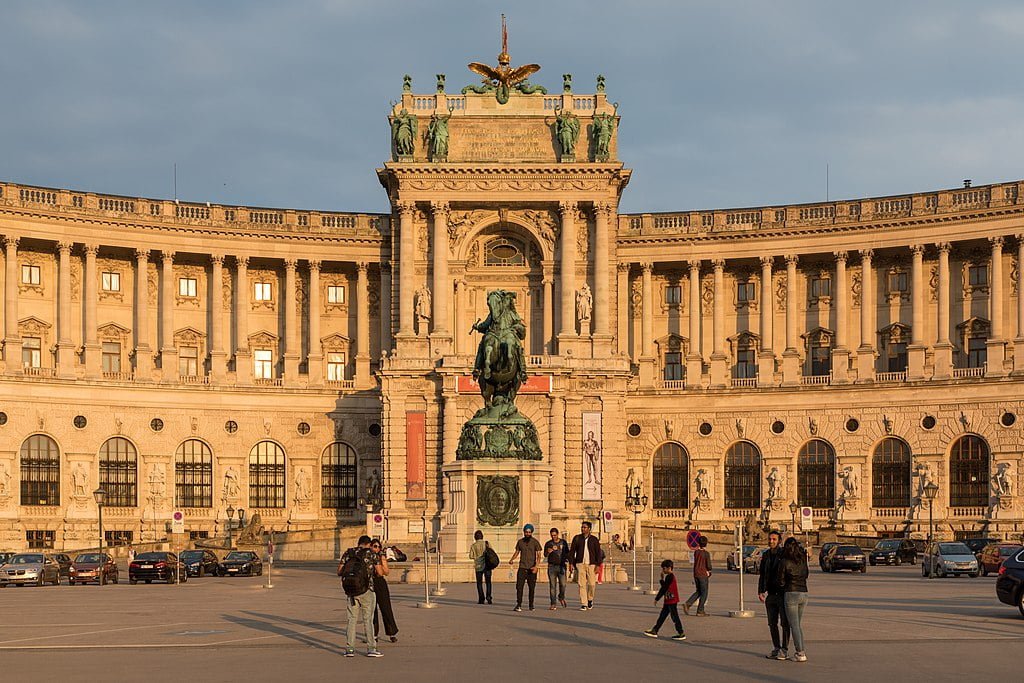
The Winter Palace of the Habsburg Dynasty, the Hofburg, is the most opulent palace in Austria. The 2600 palatial rooms make this one of the largest palaces in the world, with Imperial apartments, ballrooms, reception halls, and all things fairytale are still on view today. Each Austrian royal over the past 500 years has added to and altered the palace, resulting in the magnificent palace standing today.
The Gothic Hofburg Chapel, first mentioned in 1296, is the oldest part of the palace; today, the Swiss wing and court (in which the chapel is located) are also home to the Imperial Treasury. Visit all19 courtyards, each with beautiful statues and columns, before moving through the 18 wings of the Imperial Palace to see the silver and furniture collections that are unequaled in Austria.
- Location: Vienna, Austria
- Time built: 13th to 20th Century
- Architectural style: Baroque
- Touring: Allowed. Visit the official website for more information.
10. Moosham Castle
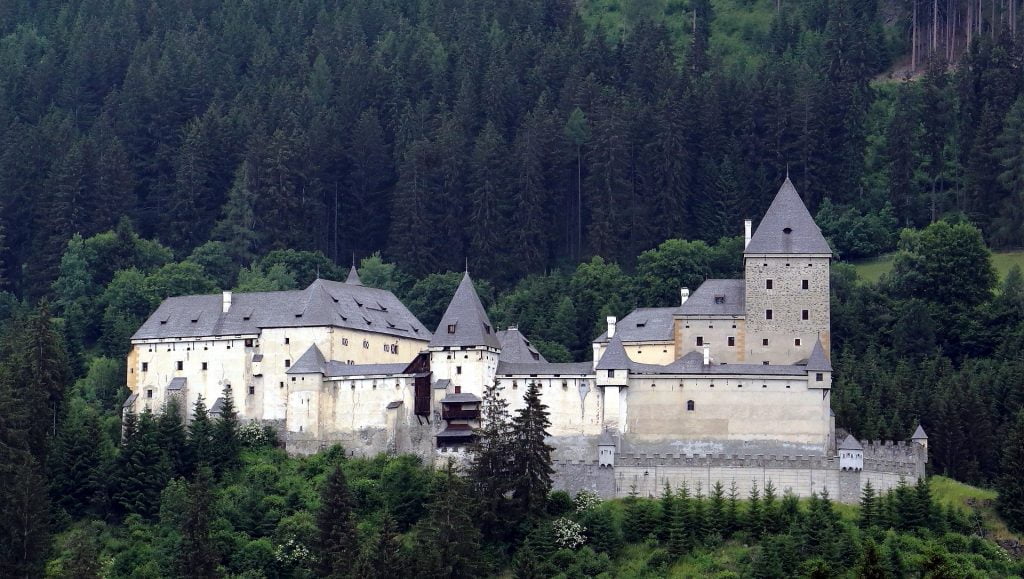
Moosham Castle is one of the jewels of the city of Salzburg. It is sometimes known as the “Witch Castle”, in reference to the tragedy that occurred here. Moosham Palace served as an administrative center during the Zuberer Jackal witch trials of 1675-1690. The hunts ultimately led to 139 people, including children, being beheaded in the castle courtyard. This castle was also famously known for the werewolf hunts that started in this region. At slightly tamer points in history, the castle was home to archbishops and princes.
For a short time, the castle was lost to history until it was rediscovered and restored. Most of the fortress is inaccessible to the public as it is private property. However, visitors can walk to Count Wilczek’s rooms featuring Wilczek’s extensive art collection.
- Location: Unternberg, Salzburg
- Time built: 13th century
- Architectural style: Medieval
- Touring: Allowed. Visit the official website for more information.
Planning to Visit Nearby Countries? Check Out These Best Castles Lists:
10 Less Popular Castles Worth Visiting While In Austria
If you are a castle enthusiast, you must take out the time to visit these equally spectacular castles in Austria as well:
11. Aggstein Castle
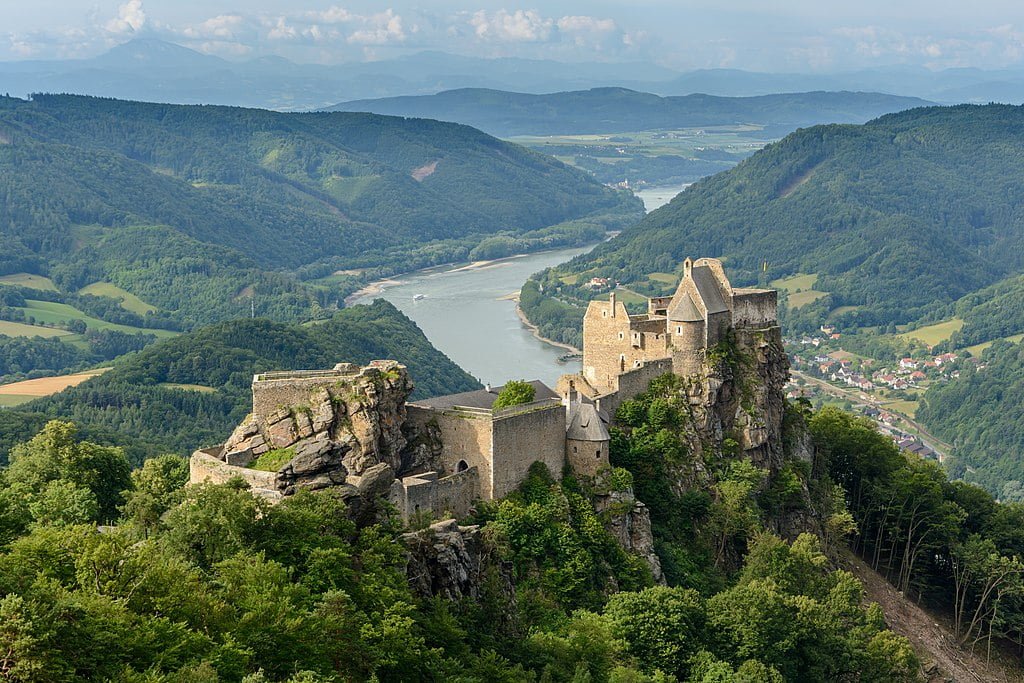
Built by Manegold III of the Kuenringer dynasty in 1181, Aggstein Castle overlooked the Danube, which would prove troubling. The castle became known as a place of torture for captured sailors imprisoned in the dungeons from robbed ships. The “Rose Garden”, actually a rocky cliff, is where prisoners were tied up to either jump or starve to death.The castle changed ownership over the centuries until it was burnt down by the Ottomans in the 16th century. Centuries later, the castle which remains today is filled with hidden stairways and passages.
- Location: Aggstein, Austria
- Time built: 12th Century
- Architectural style: Medieval
- Touring: Allowed. Visit the official website for more information.
12. Burg Kreuzenstein
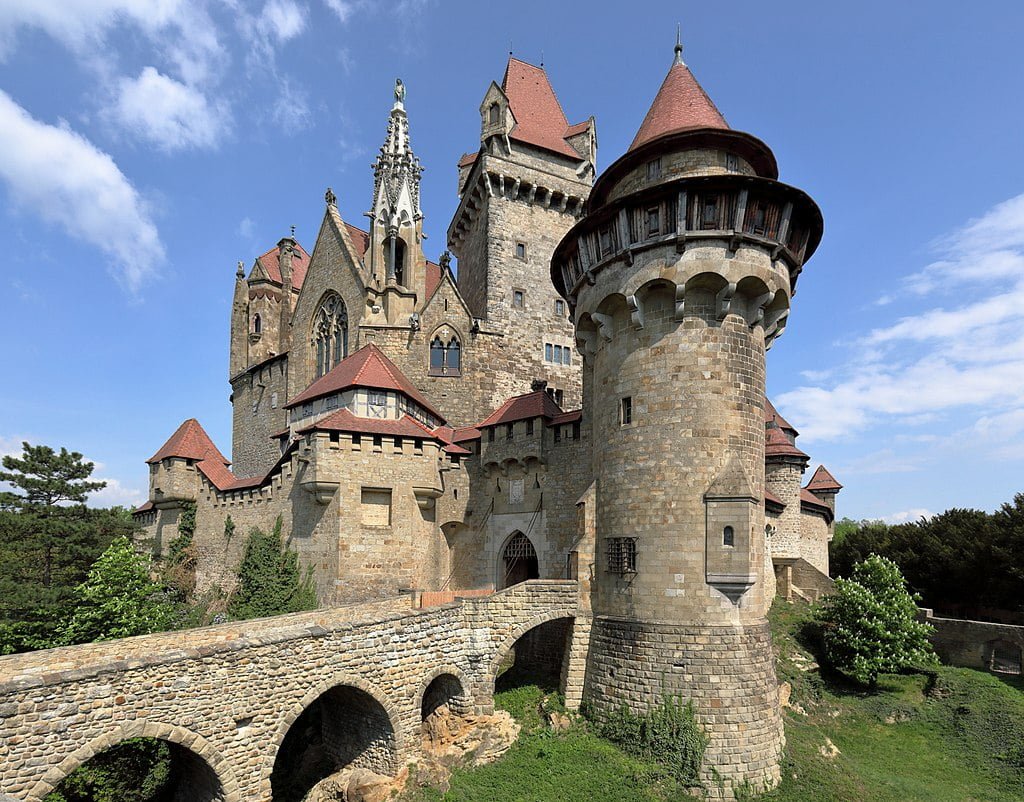
This powerful and strategically located castle was built by the Formbachers in the 12th century as a medieval fortress. The castle had many rulers throughout the centuries, including the Habsburgs, and remained an unconquered stronghold until the Thirty Years’ War in 1645.
During the 18th century, the castle was owned by Count Johann Neopumuk Wilczek, a famous polar explorer. The new construction was built on the original medieval site and Wilczek acquired many original pieces throughout Europe to restore the fortress to its former magnificence.
- Location: Vienna, Austria
- Time built: 12th Century
- Architectural style: Neo-Romantic
- Touring: Allowed. Visit the official website for more information.
13. Hohensalzburg Castle
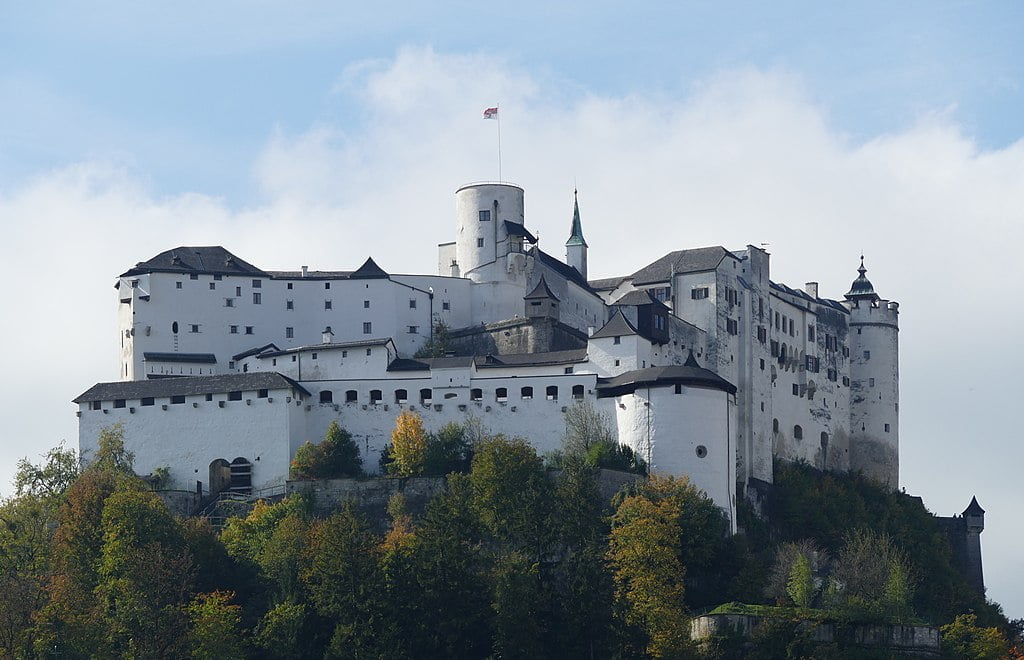
Hohensalzburg Fortress is Central Europe’s largest fully preserved wonder. Ordered by archbishop Gebhard, foreign invaders have never invaded the fortress. The castle had changed the Salzburg skyline since the day it was erected. Today the structure that still stands has been modified by the many successors of the archbishop.
Other than the picturesque views of the region, the fortress offers a museum and an interactive exhibition visiting an experience of a lifetime. Indulge in the Zeughaus shows showcasing arms, cannons, firearms, and the fortress’s other defense strategies.
- Location: Salzburg
- Time built: 11th century
- Architectural style: Alpine design before modification
- Touring: Allowed. Visit the official website for more information.
14. Ambras Castle
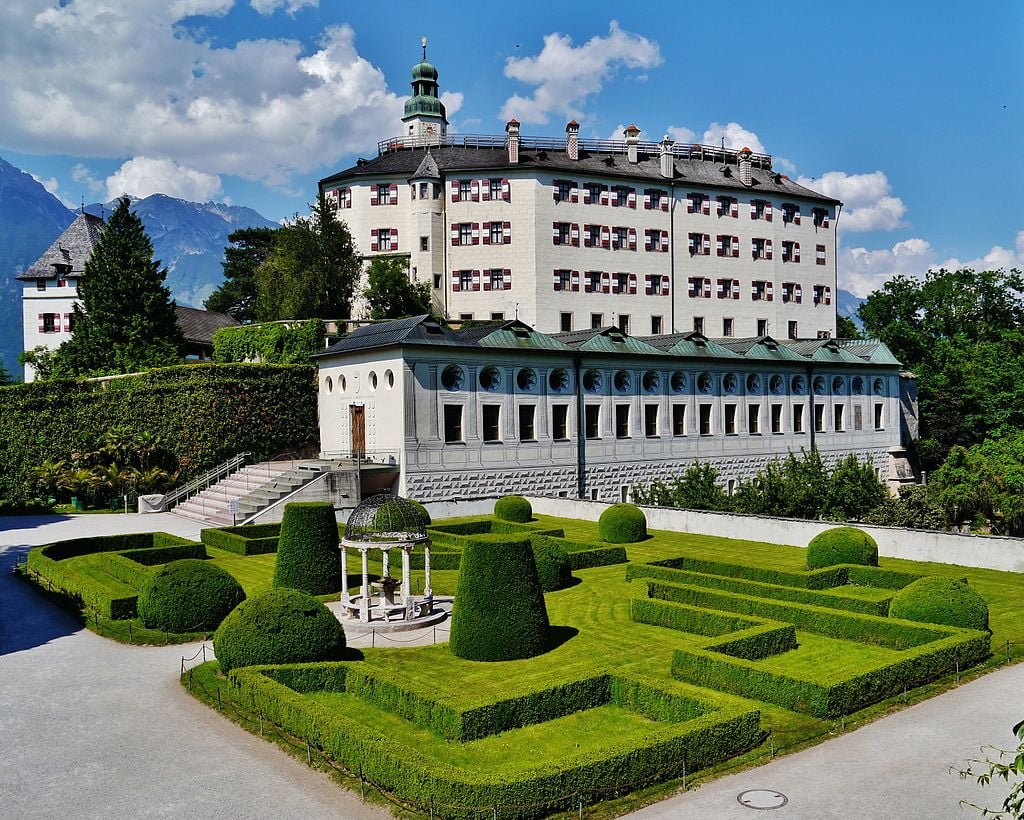
Nestled among the hills of Innsbruck, Ambras Castle looks like something out of a romance novel. The original medieval castle belonged to the House of Andechs, Archduke Ferdinand II had it transformed as a gift for his wife.
The prince was an avid art collector. To this day, the palace is adorned with over 200 art pieces, books, and armors throughout the building. The most notable collections are the Collection of Gothic Sculpture and the Strasser Collection of Glass.
- Location: Innsbruck, Tyrol
- Time built: 11th and 16th century
- Architectural style: Medieval, Renaissance
- Touring: Allowed. Visit the official website for more information.
15. Burg Wiener Neustadt
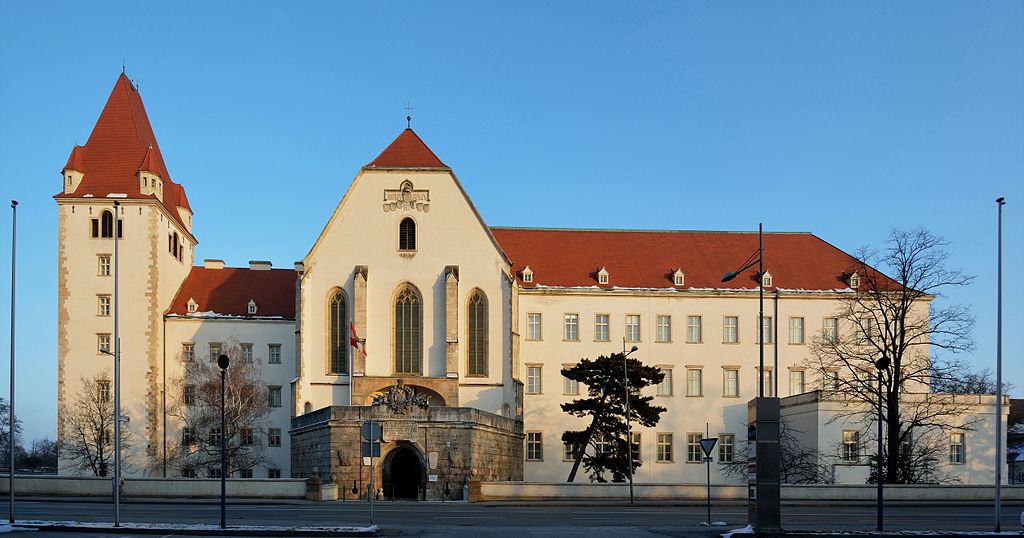
The original castle was built from money received as a ransom for Richard the Lionheart in the 12th century. In 1348, the castle was destroyed by an earthquake and Leopold III commissioned the building of a larger, imposing building–one that continued to be modified and renovated to the current look of Burg Wiener Neustadt.
The oldest military academy in the country was founded in the castle by Empress Maria Theresa, it was destroyed during World War II and again functioned as a military academy from 1958.
- Location: Weiner Neustadt, Austria
- Time built: 12th century
- Architectural style: Military
- Touring:Allowed. Visit the official website for more information.
Revisit More Historic Places Below or Read Further
16. Burg Clam
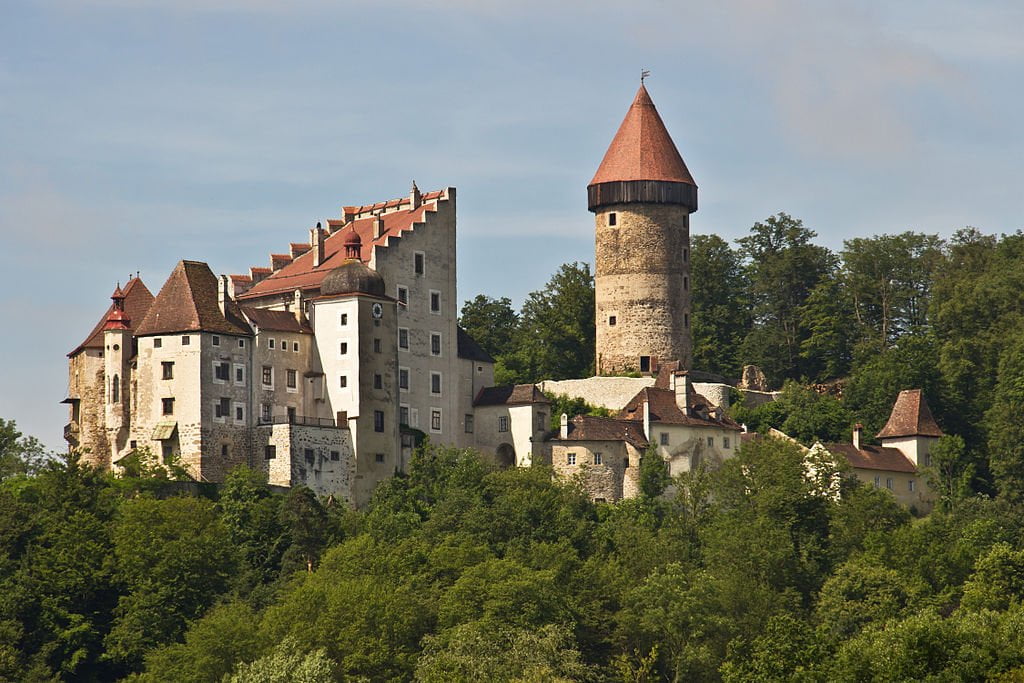
Built on the order of Otto von Machland as the family home of the Counts of Clam, Burg Clam is a mighty fortress. It looks over the Danube Valley in Upper Austria. The palace had to be defended by a private army during the Thirty Years’ War. Although enemy troops never controlled it, the many sieges that occurred here caused significant damage to the castle.
This impenetrable palace went on to survive both world wars unharmed. Today, the estate has a hydropower plant, a riding school, farmlands, forests, and several farmhouses.
- Location:Maria Enzersdorf, Lower Austria
- Time built: 12th century
- Architectural style: Combination of many
- Touring: Allowed. Visit the official website for more information.
17. Burg Ottenstein
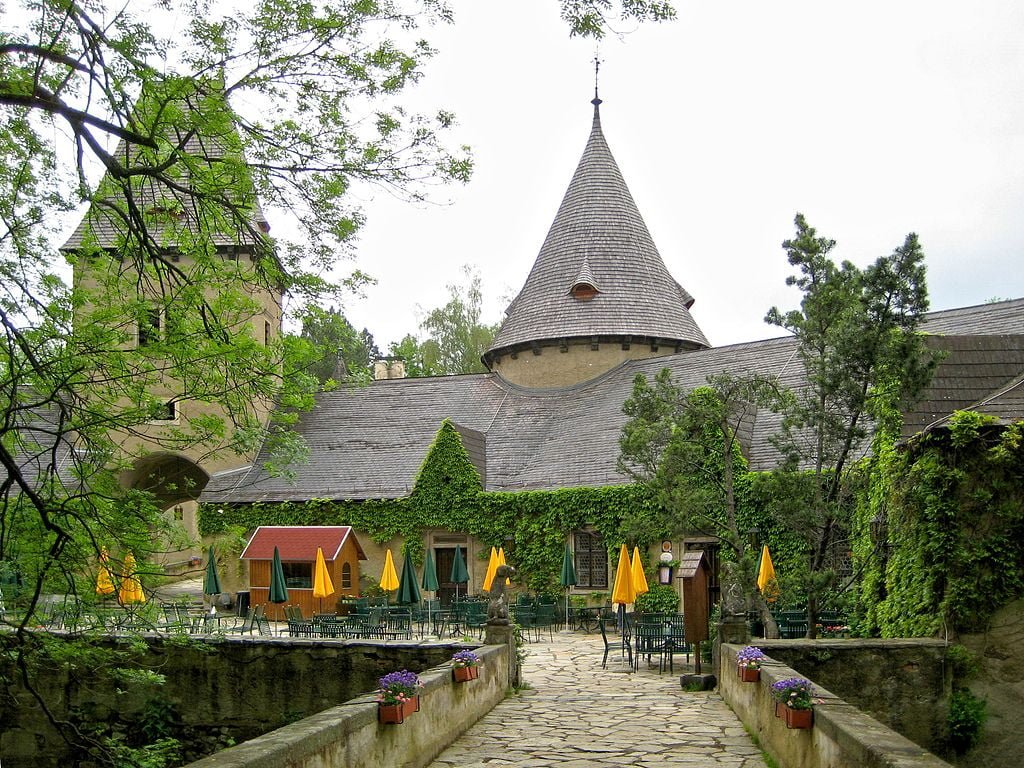
Built by the Ottenstein Dynasty in the late 12th century, the castle has original frescoes dating back to this period. The Ottenstein’s lived in the castle until the early part of the 15th century when it was besieged by Tobias von Rohr.
In 1556, it was bought by the Lamburg family, counts of the region. The castle was renovated, and extensions were made during their 400-year stay in the castle. During the 19th century, the Romanesque alterations with the conical towers and shingled roofs were built, giving it the features seen today.
- Location: Ottenstein, Austria
- Time built: 12th Century
- Architectural style: Romanesque
- Touring: Allowed. Visit the official website for more information.
18. Niederfalkenstein Castle
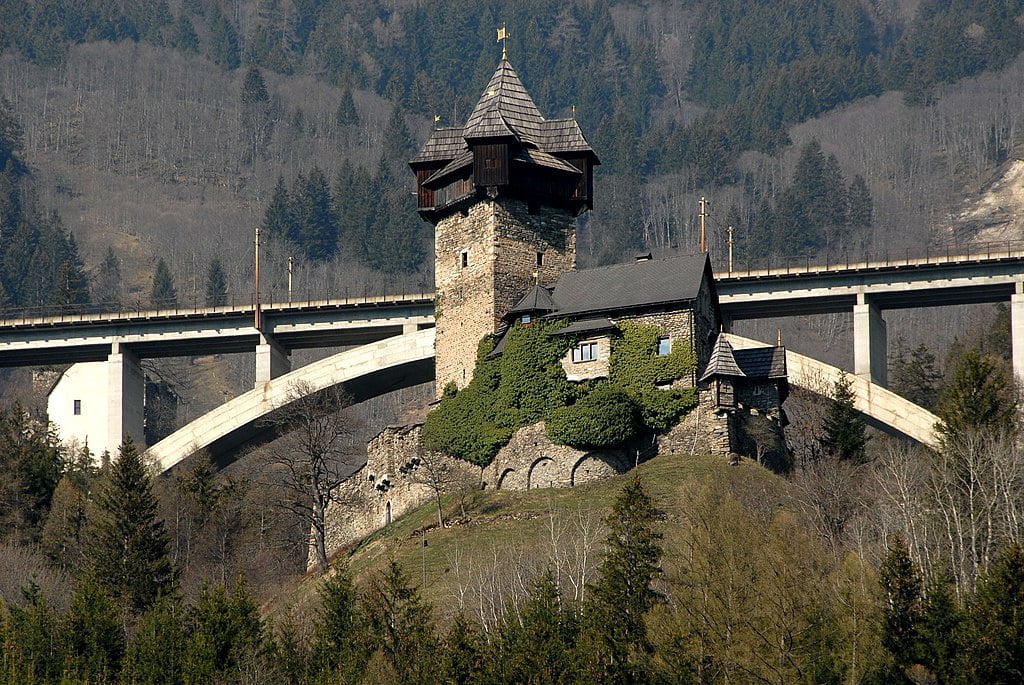
The Hohe Tauern mountains were home to the Lord of Frankenstein, who built Niederfalkenstein Castle. The House of Falkenstein became extinct around the 13th century. After their extinction, the caste was divided between two noble families.
The upper Falkenstein citadel, Oberfalkenstein, remains in ruins. The lower barbican of the Niederfalkenstein citadel is well-preserved. The property is privately owned. It can only be visited in the summers.
- Location: Obervellach, Carinthia
- Time built: 12th century
- Architectural Style: Combination of Late Renaissance, Medieval
- Touring: Allowed. Visit the official website for more information.
19. Burg Freundsberg
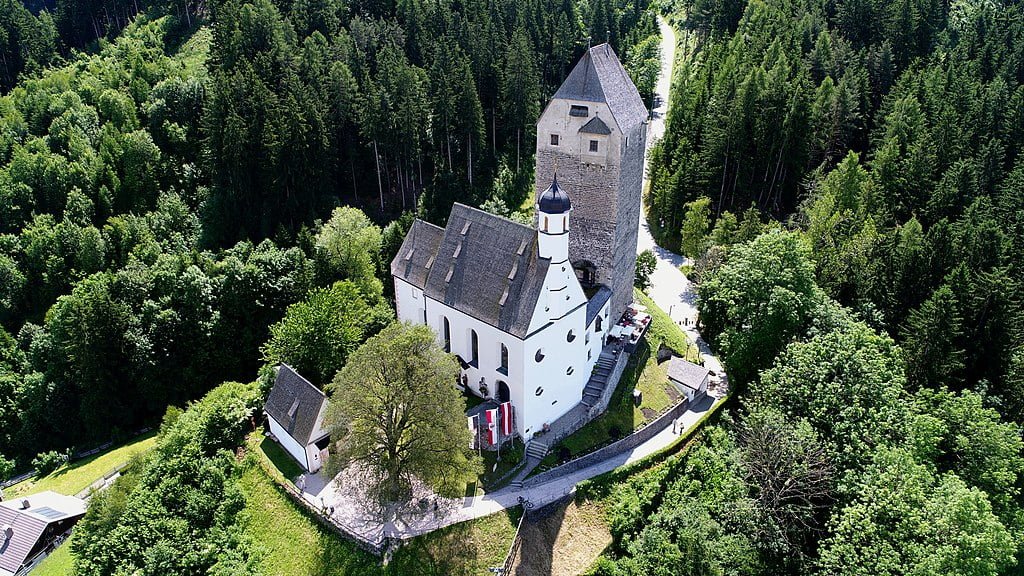
The noble lords of Freundsberg constructed the castle in 1150. The keep, part of the original structure, is intact and can be visited this day. In 1177, the chapel was built next to the keep.
Archduke Sigismund of Austria bought the lands and castle in 1467 and renamed it Sigismundruh during his reign. After modifications from 1634-37 by the new owners, it was renamed Scholsskirche, meaning “castle church”. Several owners lived in the castle and farmed the lands until it became the property of the Schwaz municipality in 1966.
- Location: Schwaz, Austria
- Time built: 12th Century
- Architectural Style: Medieval
- Touring: Allowed. Visit the official website for more information.
20. Burg Perchtoldsdorf
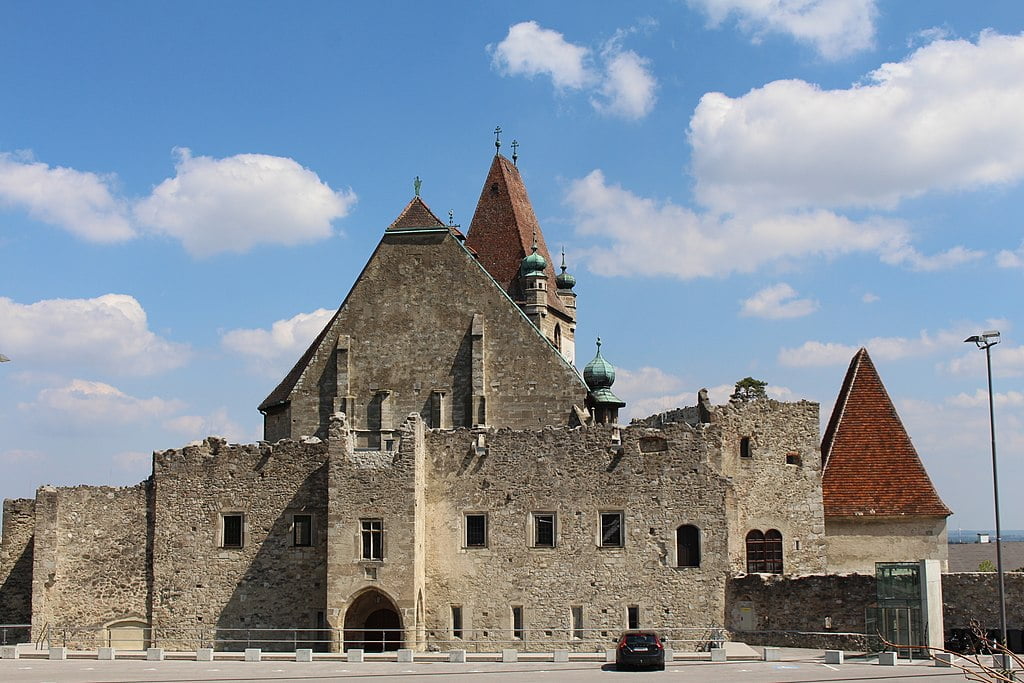
The original structure dates back to 991, when Henry the Quarrels defeated the Hungarians and built a fortification as part of the defense against invaders from the east. Originally a stone tower castle surrounded by a moat and curtain walls, the palace and three-story residential wing were added between 1250 and 1270.
Albrecht III expanded the castle and added a gated tower with a drawbridge. It became a residence for duchess widows of the Habsburg royals and entered an era of prosperity. This fortress proved an impenetrable defense against the Ottoman invasion when other castles fell to the Turks.
- Location: Lower Austria
- Time built: 10th Century
- Architectural Style: Medieval
- Touring: Allowed. Visit the official website for more information.
Planning to Explore Europe? Check Out These Best Castles Lists:
Conclusion
At the heart of the Habsburg monarchy, Austria has held a central administrative position for centuries. The stories of its prosperous and turbulent time are translated through its many fortresses and palaces.
Visitors to these magnificent castles can experience the many tragedies and victories these castles have witnessed. If you visit Austria make sure you get a glimpse at its political and mystical past by visiting these beautiful castles.

